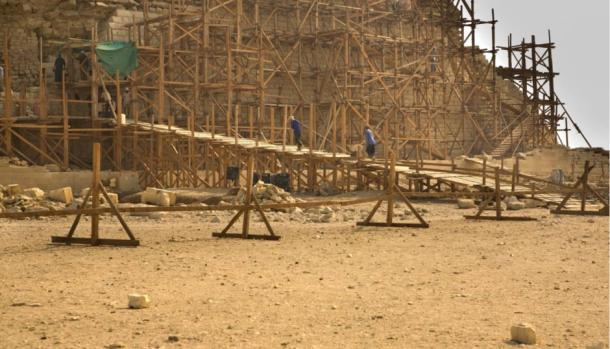Monuments Sight Seeing Attractions Djoser Step Pyramid
Monuments Sight Seeing Attractions Djoser Step Pyramid Old Kingdom pharaoh Djoser [ruled about 2668-2649 BC] was the very first of any of the pyramids built in Egypt, Monuments Sight Seeing Attractions Djoser Step Pyramid built during the Old Kingdom’s 3rd Dynasty, The pyramid and its related buildings are located at Saqqara; the pyramid itself is 254 feet tall, with seven steps.
Djoser’s tomb, as is the case with most other pyramids, is located deep beneath the pyramid, about 95 feet below the present day surface.
Several vividly painted walls were inlaid with blue tiles.
When the site was excavated in 1934 by Jean-Philippe Lauer, he found a mummified left foot, believed to be all that is left of Djoser.
The Step Pyramid is said to have been built for Djoser by that master architect and ancient Egyptian legend, Imhotep, although that may be a misinterpretation of the data.
Nonetheless, Imhotep has certainly gained a long-lived reputation.
The Great Pyramid of Khufu in Giza is arguably the most famous of all pyramids in Egypt, or in the world for that matter.
Yet, this was not the first pyramid that was built by the ancient Egyptians.
An earlier Egyptian pyramid was built 4,600 years ago in Saqqara for a 3 rd Dynasty pharaoh Netjerikhet, commonly known as Djoser.
The person responsible for the design and construction of the pyramid was none other than Imhotep, who served as Djoser’s chancellor.
The most noticeable difference between Djoser’s pyramid and that of Khufu is the shape of each structure.
Unlike the Great Pyramid, Djoser’s pyramid consisted of six steps, similar to the ziggurats of the ancient Mesopotamian city states, and thus was commonly known as the Step Pyramid of Saqqara.
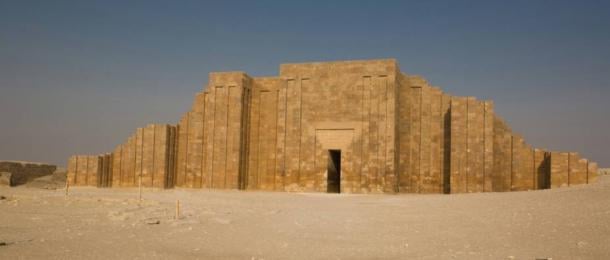
Monuments Sight Seeing Attractions Djoser Step Pyramid
The unique shape of Djoser’s pyramid may be explained by looking at the building structures that were in use prior to the construction of pyramids in ancient Egypt.
During Egypt’s Early Dynastic Period and Old Kingdom, rectangular structures with a flat roof and outward sloping sides were used to mark the tombs of the elite members of society.
These structures, made of mud-brick or stone, were known as mastabas (meaning ‘bench of mud’ in Arabic).
Perhaps intending to outdo his predecessors, Djoser decided to stack six mastabas, each of a decreasing size, on top of each other, thus producing the Step Pyramid.
Perhaps the construction of the Step Pyramid was a reflection of the evolution of the understanding of Egyptian kingship, as the structure could also be interpreted as a means to facilitate the king’s ascension into the divine realm after his death.
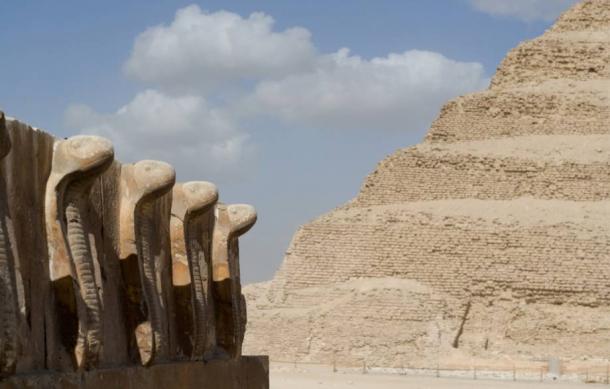
Monuments Sight Seeing Attractions Djoser Step Pyramid
Regardless of the reason for this innovation, the Step Pyramid was an architectural marvel of its time.
At a height of about 62 m, the Step Pyramid dominated the landscape of the Saqqara Necropolis. Nevertheless, the pyramid was only part of a larger mortuary complex that served to perpetuate the cult of the pharaoh.
The entire complex, which covered an area of 15 hectares, was surrounded by a wall of light Tura limestone 10.5 m high.
Fourteen walls can be found along the wall circuit, though only one entrance (located on the south end of the east façade) was accessible to the living.
This entrance is connected to the South Court via a roofed colonnade.
The columns of this passage were made of limestone carved to resemble bundles of plant stems.
In the South Court are curved stones thought to be boundary markers associated with the Sed Festival, an important rejuvenation ritual performed by the pharaoh after reigning for 30 years.
It has been suggested that the presence of these markers was meant to allow Djoser to continue benefiting from the ritual even in the afterlife.
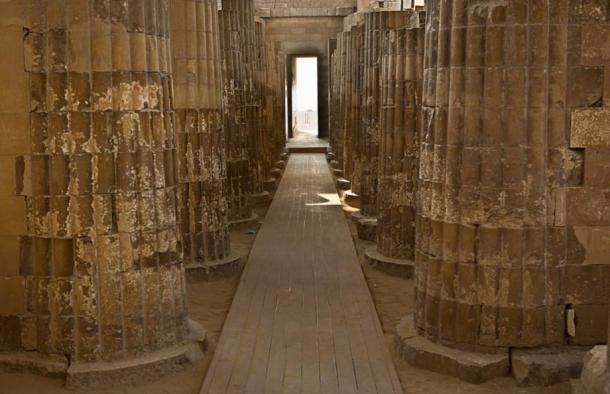
Monuments Sight Seeing Attractions Djoser Step Pyramid
As for the Step Pyramid itself, its entrance is located in the north side of the structure.
Djoser’s mortuary temple can also be found on this side of the pyramid.
This temple served as the cult centre for Djoser’s divine ka.
It was in this temple that the daily rituals for the dead could be performed, and offerings could be presented to the pharaoh in the afterlife.
It may also be pointed out that the mortuary temple faced north as it was believed that the pharaoh would become one of the eternal stars in his afterlife.
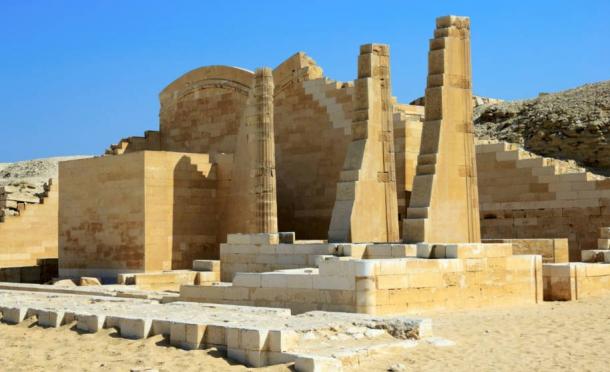
Monuments Sight Seeing Attractions Djoser Step Pyramid
The Step Pyramid has stood for over four and a half millennia, despite being constantly battered by the elements.
For the last ten years, attempts have been made to restore and conserve this ancient structure.
These attempts, however, have come under criticism.
According to critics, the restoration work has drastically altered the way the outside of the pyramid looked.
Furthermore, it has been claimed that the monument may suffer from internal damage as well.
Even so, these claims have been denied by the Egyptian authorities, and restoration work on the pyramid has been allowed to continue.
